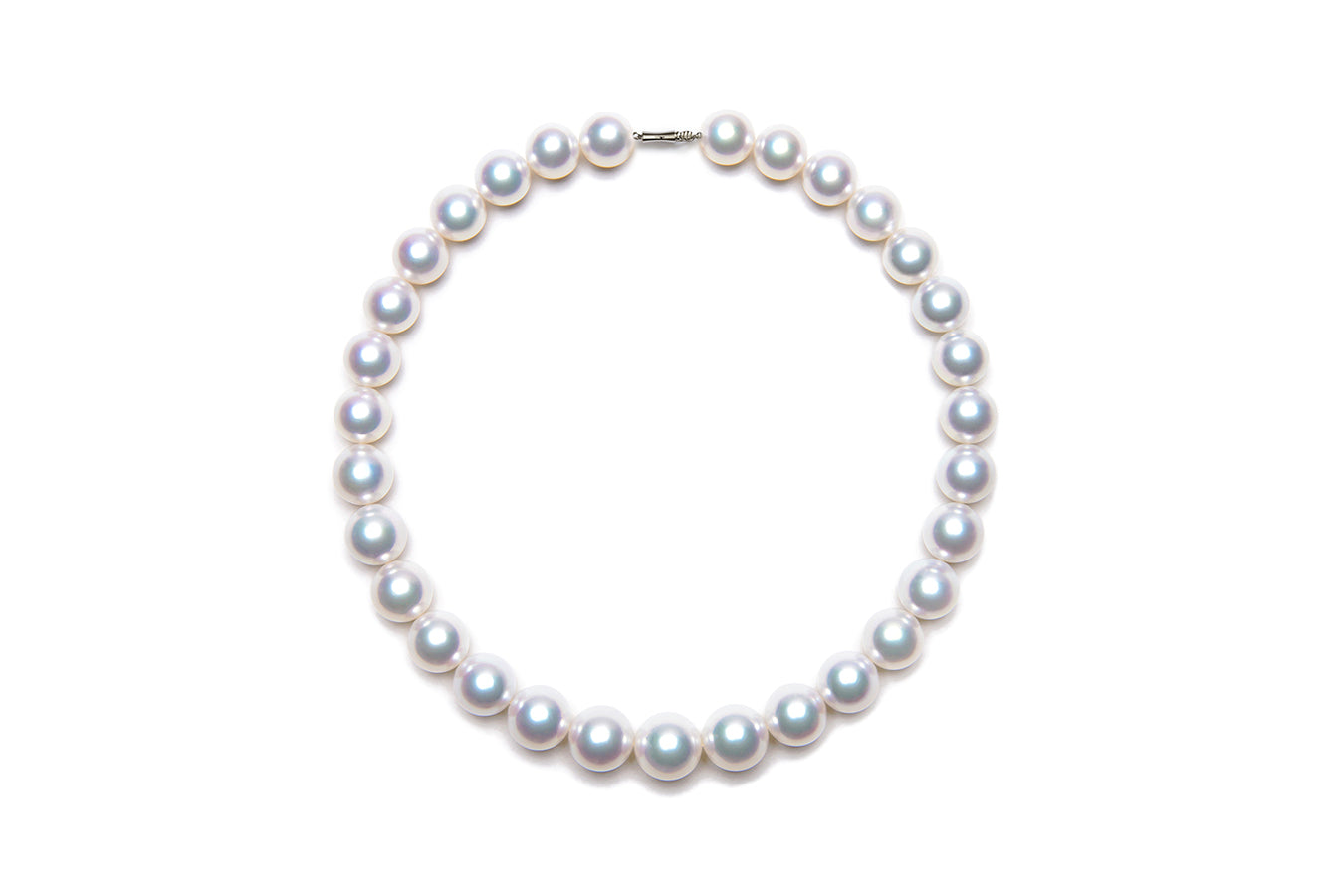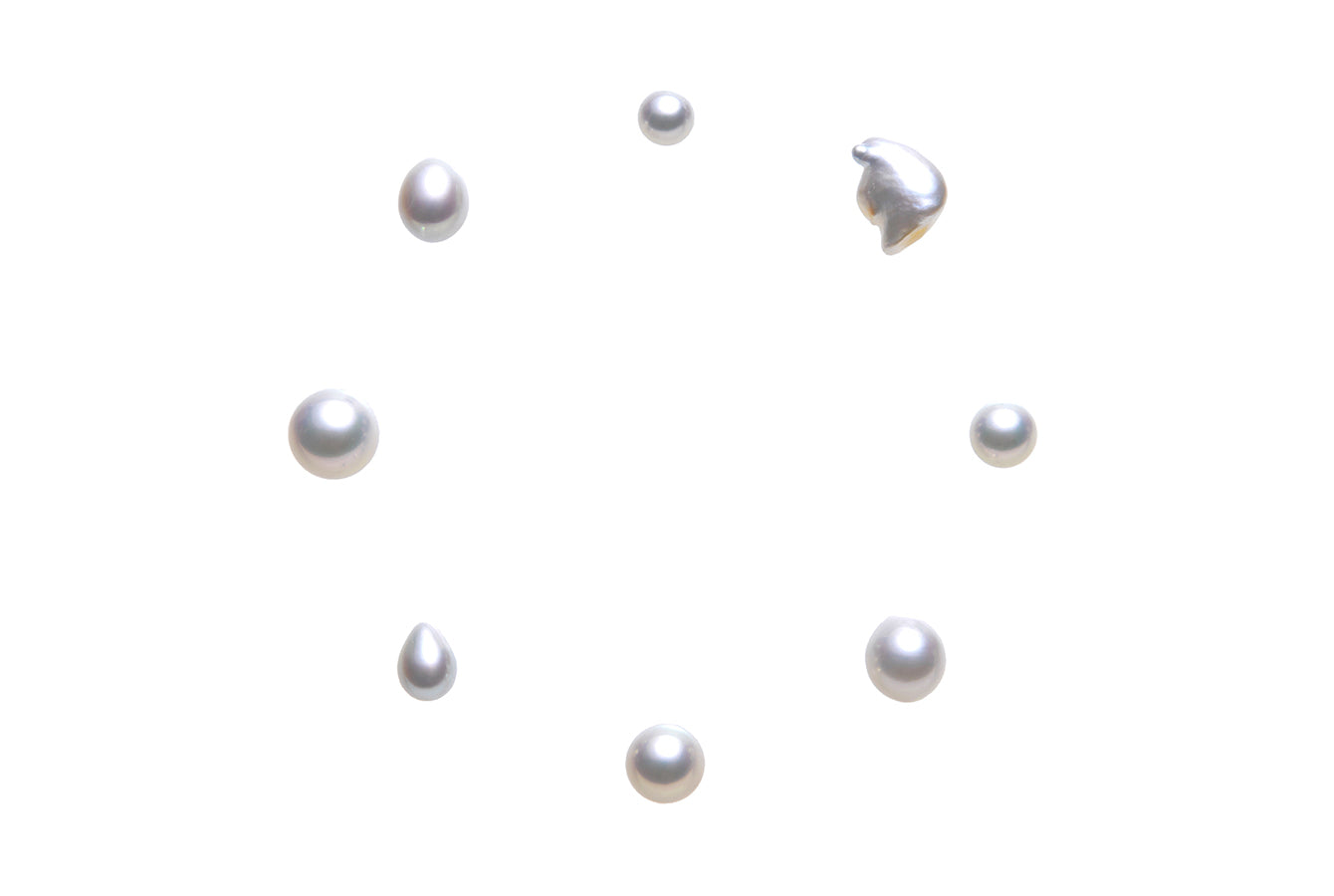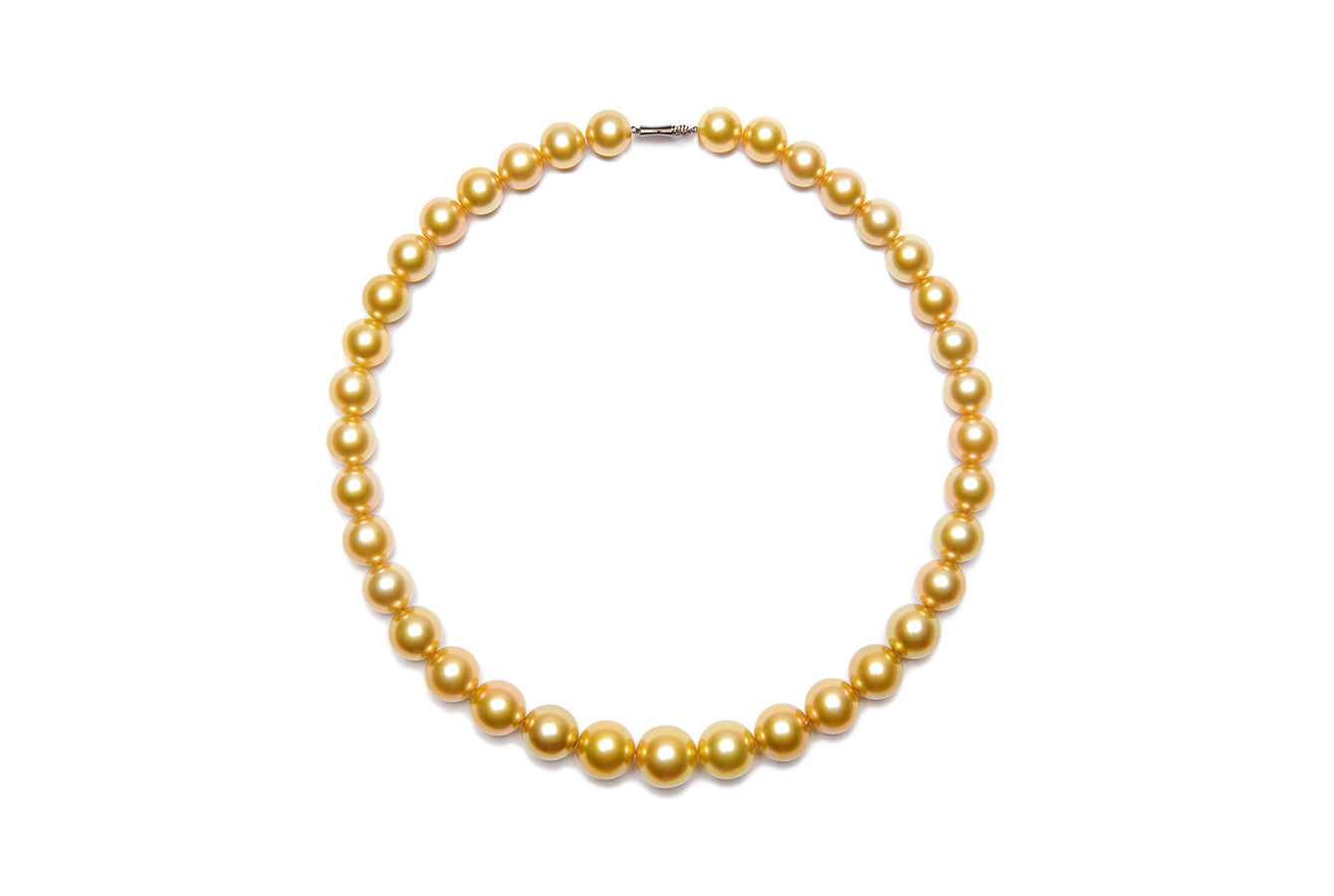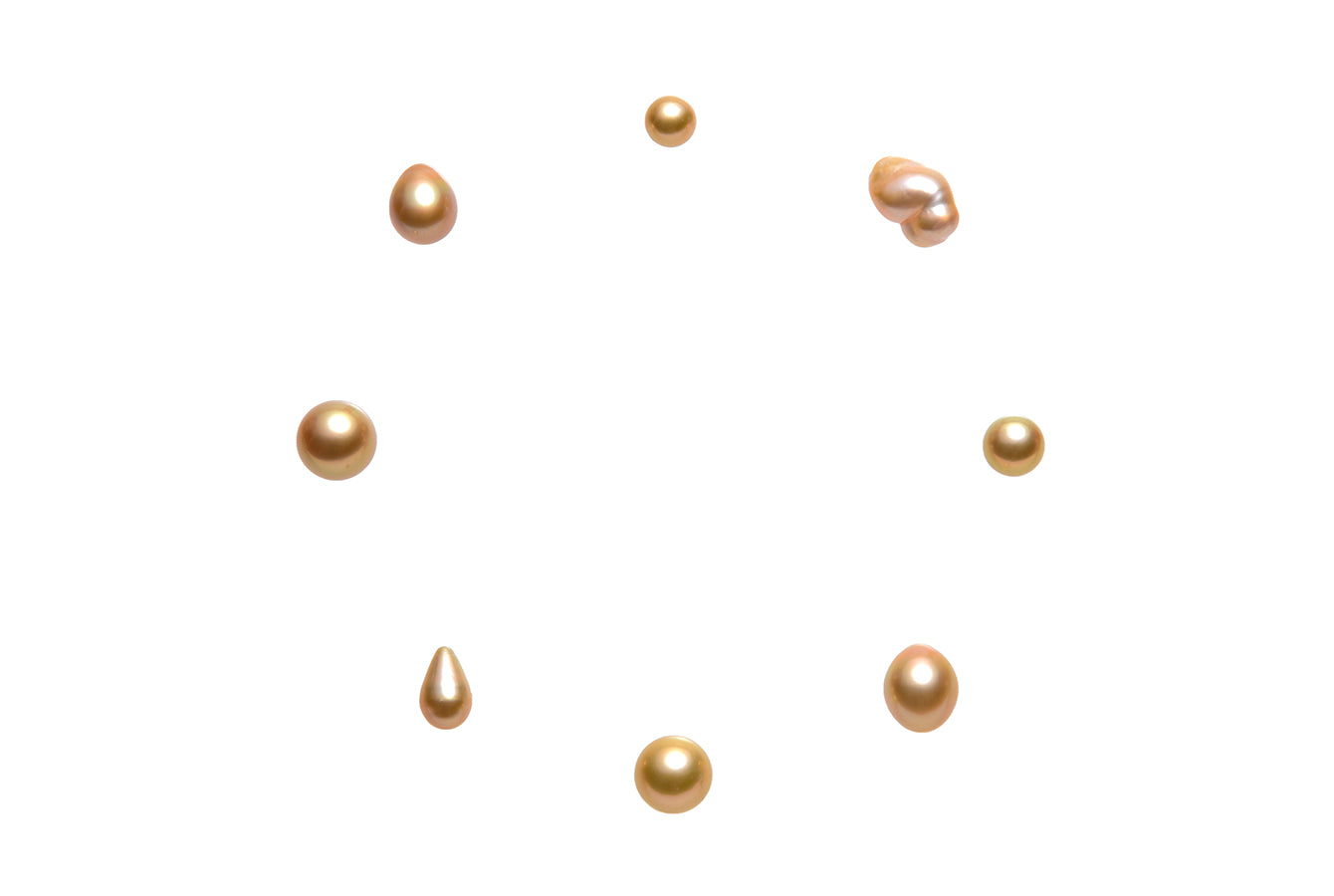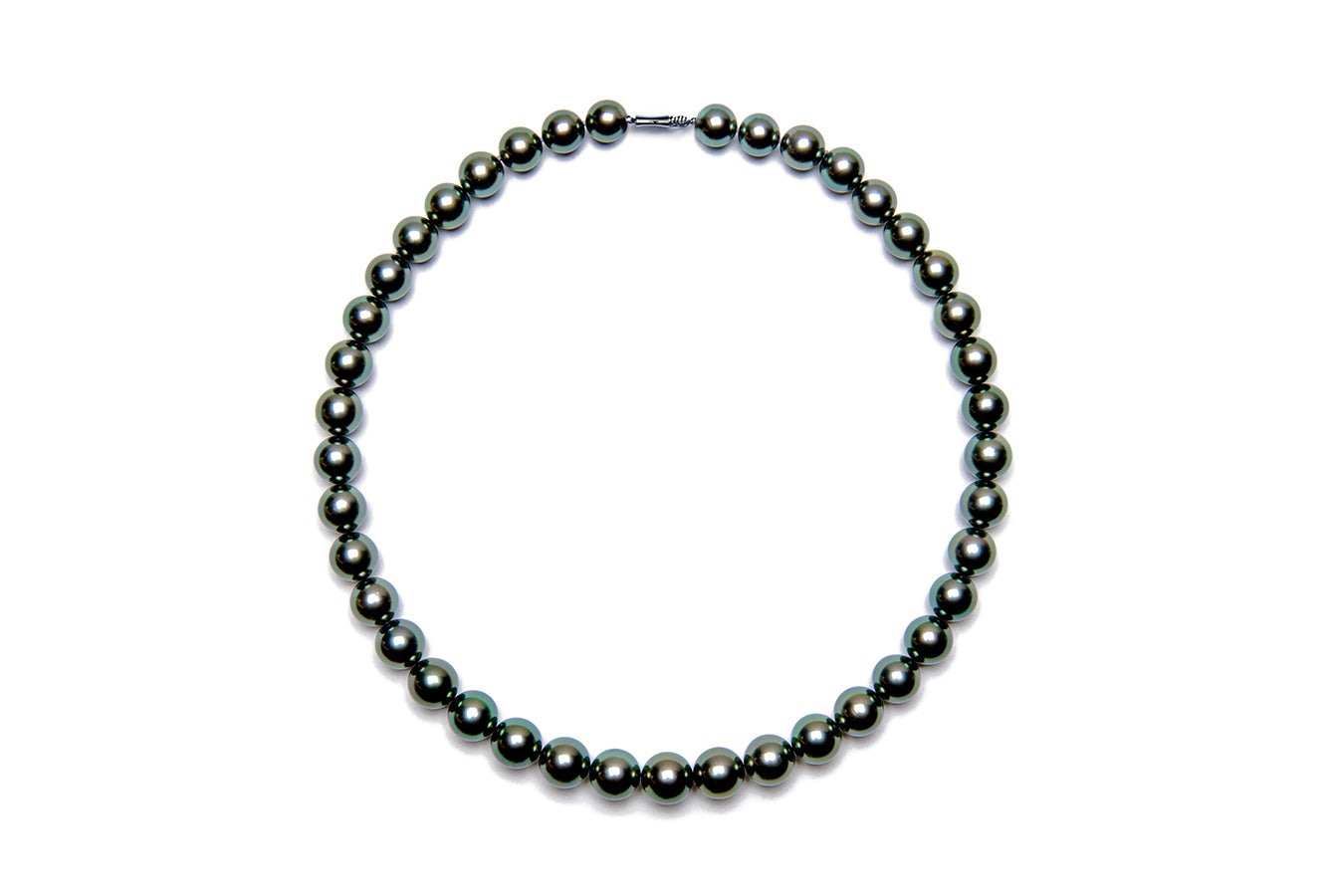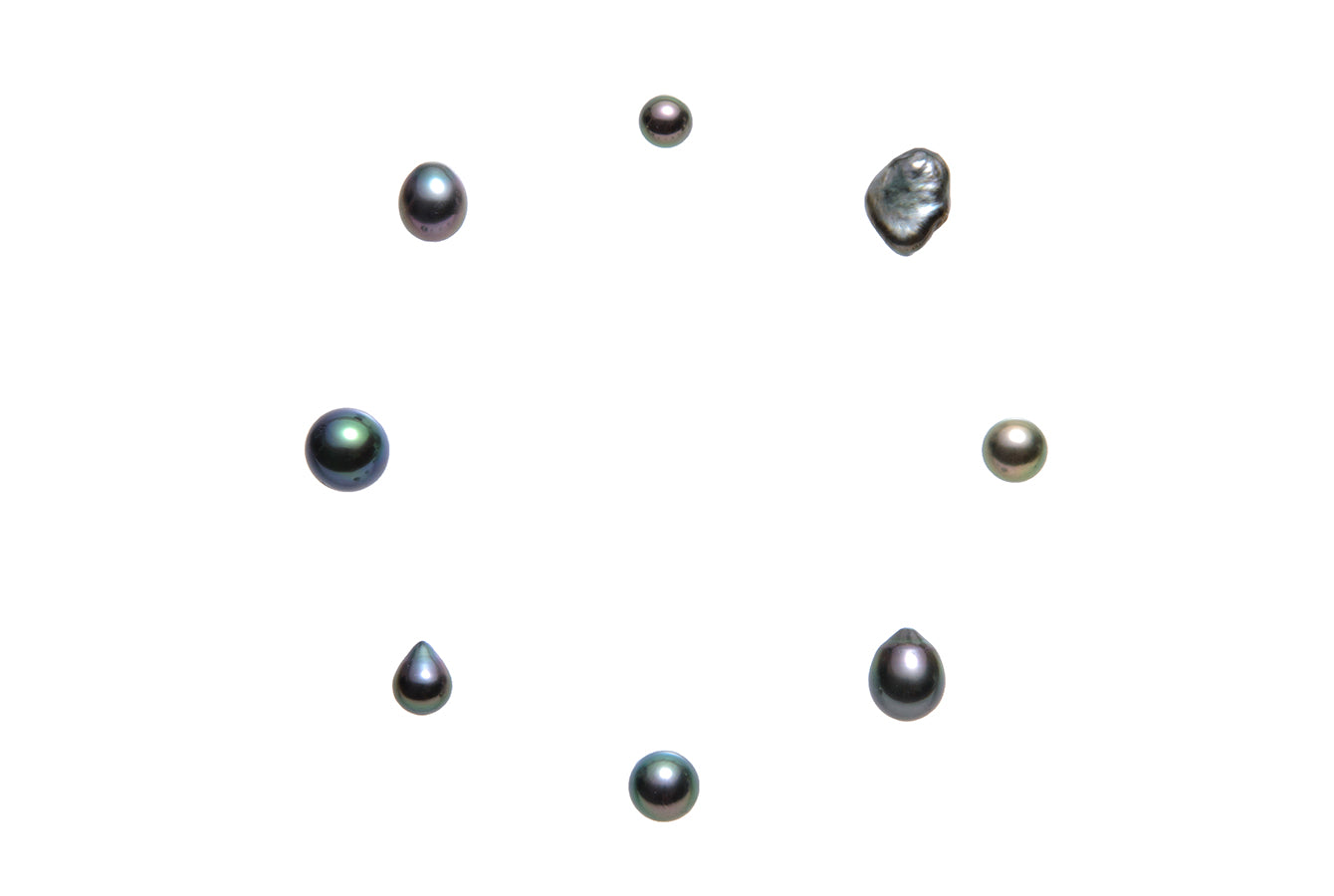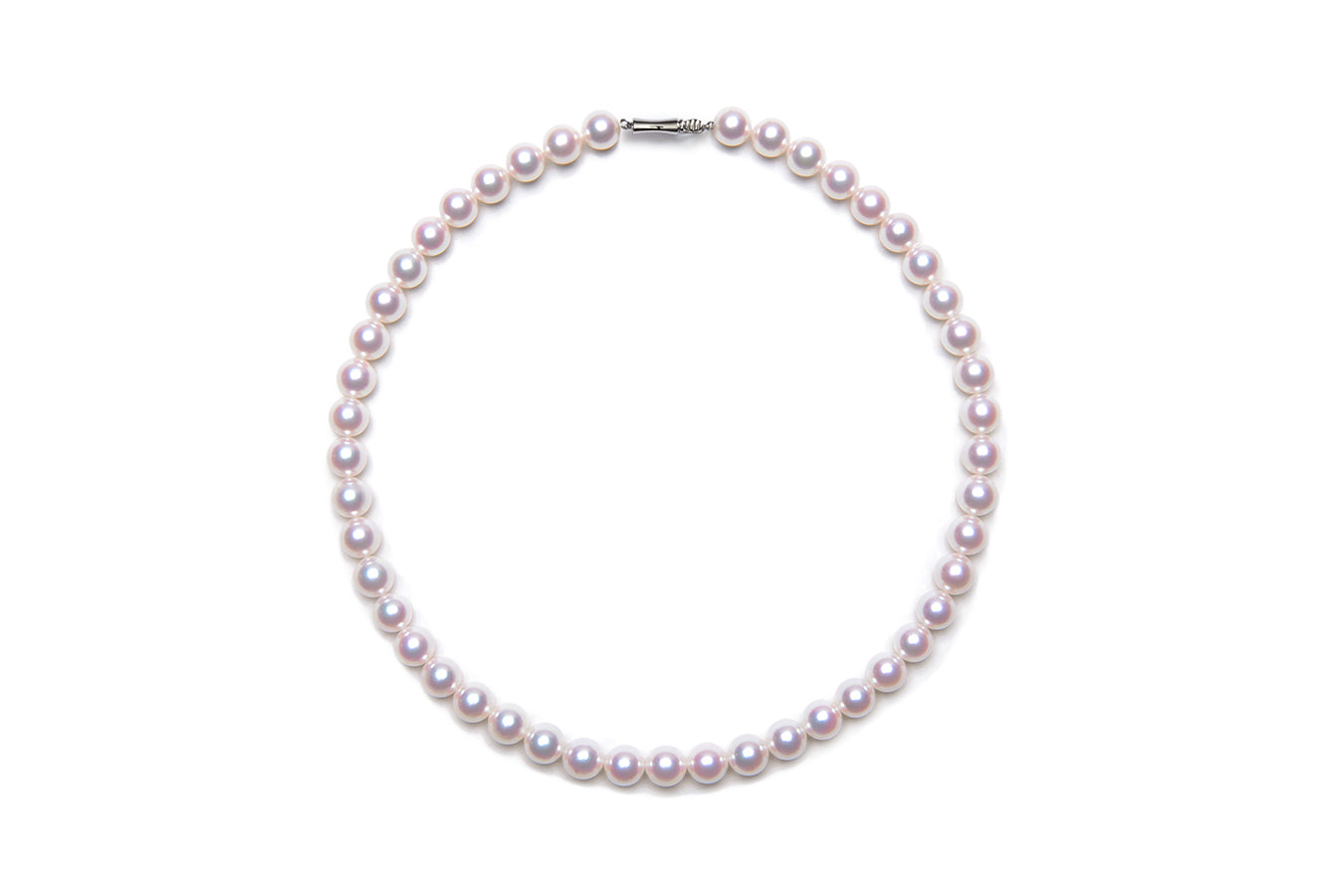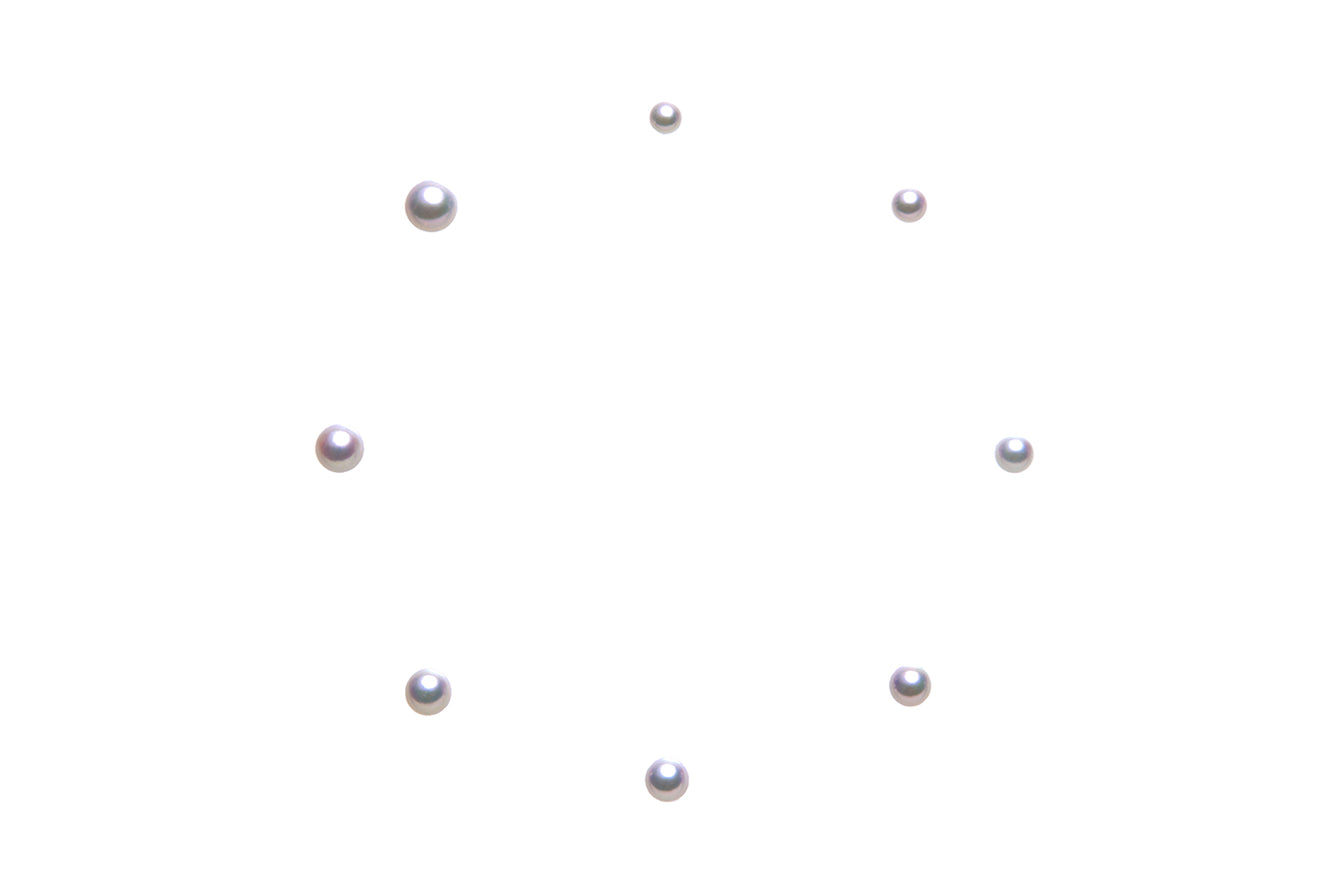Our Pearls
About Pearl Quality and Grades
The pearls we use at sCenes are all of the highest quality.
As professionals, we grade the pearls carefully, and only the fine ones are made into jewelry, but we think it's hard to convey the quality of the pearls just by the pictures on the product pages.
Therefore, on the product pages of sCenes, we evaluate and display the quality of pearls based on our own standards for the following five categories: 1) Shape, 2) Color, 3) Nacre (thickness of the nacreous layer), 4) Luster, and 5)Blemishes.
(3) Nacre (thickness of the nacreous layer) is graded in five levels, A, B, C, D and E.
(4) Luster and (5) Blemishes are graded in six levels, A, AB, B, C, D and E.
Please refer to the table below.
| A | AB | B | C | D | E | |
|---|---|---|---|---|---|---|
| Nacre | Very Thick | — | Thick | Medium | Thin | Nearly nucleus |
| Luster | Excellent | Very Good | Good | Medium | Poor | Very Poor |
| Blemishes | None-Very few | Few | Small | Medium | Heavy | Very Heavy |
Pearls do not have a clear grading system like diamonds, so they are only evaluated based on our own standards. Please use them as a reference.
Each pearl is unique and may have characteristics that cannot be displayed using only the five categories of the standard.
Please note that it is difficult for us to display all the characteristics due to the nature of our online store
If you have any questions about our products, please feel free to contact us before purchasing.
About Blemishes and Evaluation Criteria
The term "Blemishes" refers to a "natural blemish" that occurs during the pearl formation process.
Pearl is a gemstone created by pearl oysters, so most pearls have indentations or protrusions in the nacreous layer. They are not artificially created blemishes.
| Evaluation Criteria | |
|---|---|
| A | No blemish, or if there is a blemish, a very, very minute blemish. |
| AB | Those with minute blemishes. |
| B | A pearl with only a few small blemishes. If the blemish is near the hole of the pearl, even if it is slightly noticeable, it may be considered in this grade category. |
| C | There are more small blemishes than the standard of B, but there are no deep blemishes. Or, there are some deep blemishes, but only a few. etc. |
| D | The blemishes are larger than the standard of C, and there are many noticeable blemishes. However, there should be no cracks or bumps. etc. |
| E | Holes that reach the nucleus, cracks, big bumps, or other defects. etc. |
*The information listed above is an example of sCenes' original grading criteria.
If you have any questions about our products, please feel free to contact us before you buy.
About the types of pearls
Natural pearls and Cultured pearls
There are two types of pearls: natural pearls, which are naturally formed in shells by chance without human intervention, and cultured pearls, which are cultured by inserting a base made of shells called a nucleus into the shell.
Natural pearls have a very small chance of being found, and if they are found to be valuable, they are very expensive.
Because of this, it is very difficult to make jewelry from natural pearls, and since the 18th century, there has been a lot of research and experimentation on pearl cultivation in order to produce a stable supply of pearls.
After some hard work, in 1893, Kokichi Mikimoto, the founder of Mikimoto, succeeded in cultivating pearls for the first time, and a stable supply of pearls became available.

The pearls we see today are mostly cultured pearls.
Although cultured pearls are not as rare as natural pearls, they take a lot of time and effort to produce and cost a lot of money.
No matter how much time and effort is spent, it is the power of the shellfish that produces the pearls, and depending on changes in ocean conditions, not all pearls will be good.
We believe that cultured pearls are not easy to make, and that the time and effort that goes into making them is what makes them special and unique, and that is why we make them into jewelry.
Seawater pearls and Freshwater pearls
Pearls are roughly divided into seawater pearls collected in the sea and freshwater pearls collected in lakes.

The main difference between the two types is production efficiency.
Because of the small size of mother shells cultivated in seawater, such as the Akoya oyster, the amount of pearls produced from one shell is basically limited to one, and even when producing small-sized pearls, the number is only a few.
On the other hand, pearl oysters cultivated in lakes are large in size, and dozens of pearls can be cultivated from a single oyster.
The rearing environment is also different.
Saltwater pearls are cultivated in oceans where the sea conditions are not stable, so a lot of work is required to move the shells and clean them according to the season and sea conditions.
Freshwater pearls, on the other hand, are cultivated in lakes where there are no waves and the environment is expected to be moderate, so basically they can be produced more efficiently with less labor than in the ocean.
These differences in the environment and the mother oyster lead to differences in the luster, color and fineness of the nacreous layer, as well as differences in productivity, resulting in differences in the value of the pearl.
| Akoya pearl | Tahitian pearl | South sea pearl | Freshwater pearl | |
|---|---|---|---|---|
| Body of water | Sea | Sea | Sea | Lake |
| Annual production volume (kg) | About 22,000 | About 13,000 | About 12,000 | About 1,550,000 |
| Origin | About 90% Japan, 10% Vietnam | About 99% Tahiti, less than 1% Fiji, etc. | About 45% Indonesia, 20% Philippines, 20% Australia, 15% Myanmar, etc. | About 99% China, less than 1% USA, Japan, etc. |
* Data from a Japanese research firm in 2015
The deep and precious brilliance of seawater pearls. The colors and shapes that only freshwater pearls can produce.
The appeal of cultured pearls is that they can be used in jewelry designs that make the most of the advantages of each pearl, and can be used in ways that suit the style and occasion of the person who wears them.
At sCenes, we use a variety of seawater pearls, including Akoya pearls from Japan, the origin of cultured pearls, to make jewelry.
For more information about the pearls we carry at sCenes, please refer to the following.
White South Sea Pearls 白蝶パール
These large pearls are harvested from Pinctada maxima cultivated in Australia and Indonesia.
As Pinctada maxima, the pearl oyster, is larger than Pinctada fucata martensii, it can produce large pearls of over 10mm which is difficult with Pinctada fucata martensii.
There are two types of pearl oyster: silver-lipped and golden-lipped.
Australian-produced silver-lipped oysters give mostly clean, white pearls while mostly yellow-white pearls are cultivated and harvested from yellow-lipped oysters in Indonesia.
Size ranges from 8mm - 20mm but, in particular, few pearls of 15mm and over are produced, making them extremely rare.
PEARL HOUSE stocks White South Sea Pearls in all shapes and sizes, including round, drop, baroque and keshi pearls, and uses only the best quality pearls.
Golden South Sea Pearls 白蝶ゴールデンパール
Yellow-gold coloured pearls harvested from Pinctada maxima called golden-lipped oysters are also South Sea Pearls.
These pearls are produced mainly in Myanmar, Indonesia and the Philippines and the prevalence of beautiful rich golden colour is very rare among South Sea pearls.
Golden-lipped South Sea pearls are a little smaller than silver-lipped pearls therefore production sizes range from 8mm - 17mm.
PEARL HOUSE stocks Golden South Sea Pearls in all shapes and sizes, including round, drop, baroque and keshi pearls, and uses only the best quality pearls..
Tahitian Pearls タヒチアンパール
Tahitian Pearls are harvested from Pinctada margaritifera cultivated in the South Pacific in Tahiti and the Cook Islands and their deep colour is very attractive.
Colour ranges from a rich black to green, blue, red and silver giving varied colour variations.
Pinctada margaritifera are smaller than Pinctada maxima with production size being mostly between 8mm - 16mm and there are few particularly large, dark-coloured pearls harvested due to the small size of the pearl oyster.
PEARL HOUSE stocks Tahitian Pearls in all shapes and sizes, including round, drop, baroque and keshi pearls, and uses only the best quality pearls.
Akoya Pearls アコヤパール
Akoya Pearls harvested from Akoya oyster cultivated in the seas of Mie, Ehime, Kumamoto and Nagasaki in Japan have a deep gloss with a regular texture as they are affected by the varying seasonal sea temperatures in Japan.
Compared to other cultivated pearls, most of these pearls are almost perfectly round and range in size from 2mm - 10mm.
Recent years have produced few small pearls or large pearls over 10mm, making them extremely rare.
PEARL HOUSE selects Akoya Pearls carefully and uses them with the highest quality.
